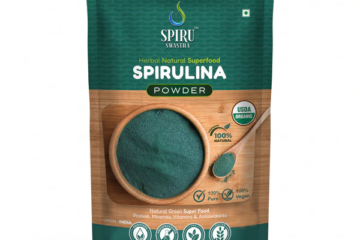Cabbage may seem like a humble crop, but for the organic gardener, it’s a rewarding test of patience, preparation, and pest management. Packed with nutrients and adaptable to a wide range of climates, cabbage thrives when grown the right way. If you’re a DIY gardener aiming to grow food that’s clean, chemical-free, and nutrient-dense, organic cabbage farming offers a chance to connect deeply with your soil, your seasons, and your table.
But going organic isn’t just about skipping pesticides—it’s about creating a resilient ecosystem in your garden. Cabbage is a cool-season crop with specific requirements, so success depends on understanding soil health, pest biology, seed selection, and timing. Whether you’re starting with a balcony garden or a backyard plot, this guide will walk you through each step to a successful cabbage harvest.
Know Your Cabbage: Varieties and Growth Habits
Before digging in, it’s essential to understand what you’re planting. Cabbage comes in multiple varieties—green, red, Savoy, and even Napa—each with different textures, flavors, and growth timelines. Some are compact, perfect for small spaces, while others sprawl out and need more room.
The average cabbage head takes about 70 to 90 days to mature, though early varieties can be ready in as little as 60. Choose your variety based on your local climate, frost dates, and space availability.
For growers interested in both flavor and productivity, it’s wise to Buy Best Quality Cabbage Seeds from a reliable source. Premium seeds not only increase your chances of strong germination but also offer better resistance to common pests and diseases—saving you time and effort throughout the season.
Preparing the Soil the Organic Way
Cabbage is a heavy feeder, which means it draws a lot of nutrients from the soil. To grow a full, dense head organically, you’ll need rich, fertile ground with excellent drainage. Soil pH should fall between 6.0 and 7.0. Sandy loam or silty loam soils are ideal, but with proper amendment, most soil types can support healthy cabbage growth.
Start by adding 2–3 inches of well-rotted compost or aged manure to your garden bed. Compost not only feeds the cabbage but improves soil structure and encourages beneficial microbes. If your soil is too acidic, consider adding lime to bring the pH into range.
Avoid synthetic fertilizers. Instead, use a mix of slow-release organic inputs like fish meal, bone meal, and seaweed extract. These feed the plant over time and help reduce the risk of nutrient leaching.
Timing is Everything: When to Plant
Cabbage likes it cool. It grows best in temperatures between 45°F and 75°F, making early spring and fall ideal times for planting.
Start seeds indoors 6–8 weeks before your last frost date, then harden them off before transplanting outdoors. If direct seeding, plant in rows and thin seedlings once they reach a few inches tall. For regions with mild winters, fall planting often results in sweeter heads due to the cold-enhanced sugar development.
Ensure your planting schedule accounts for the maturity length of your chosen variety. Early types might mature quickly but are less tolerant to pests, while late varieties offer stronger resistance but need longer to reach full size.
Watering, Spacing, and Light
Cabbage need at least six hours of direct sunlight per day. Underdeveloped heads and lanky plants might result from shade. Don’t let the soil get saturated, but keep it continuously damp. Splitting may result from uneven watering, particularly during dry intervals that are followed by intense irrigation.
For both disease protection and airflow, spacing is essential. Depending on the cultivar, most cabbages require 12 to 24 inches between plants. Smaller heads and increased pest pressure are two consequences of crowding.
Mulching aids in controlling soil temperature, weed suppression, and moisture retention. Use mulch that is a few inches from the base of the plants, such as straw, grass clippings, or crushed leaves.
“A garden is a grand teacher. It teaches patience and careful watchfulness; it teaches industry and thrift; above all it teaches entire trust.” – Gertrude Jekyll
Pest Control Without Chemicals
One of the biggest challenges in organic cabbage farming is controlling pests like cabbage loopers, aphids, and flea beetles. Fortunately, you have options that don’t involve synthetic sprays.
To start, use physical barriers to keep insects away from seedlings, such as row coverings. Another effective strategy is companion planting; to naturally ward off pests, put cabbage next to nasturtiums, onions, or thyme.
Balance can also be maintained by hand-picking pests early in the morning or by introducing beneficial insects like parasitic wasps and ladybirds. Organic-approved neem oil or BT (Bacillus thuringiensis) sprays work well against caterpillars without endangering pollinators.
Rotating crops is crucial. Steer clear of growing brassicas, such as cabbage, in the same bed every year. Crop rotation dramatically lowers disease accumulation and preserves soil fertility over the long term, according to the Rodale Institute.
Disease Prevention and Organic Resilience
Cabbage is susceptible to diseases like black rot, clubroot, and downy mildew, especially in humid environments. Prevention is your best defense.
Start by selecting cultivars that are resistant to disease. Avoid watering from above, give your plants enough space, and constantly wash your instruments. Rotate out brassicas for at least three years if clubroot occurs, as it is a destructive soil-borne disease that can persist in the soil for up to 20 years.
Think about adding helpful fungi, such as mycorrhizae or Trichoderma, to your soil. These can enhance nutrient absorption and boost disease resistance.
Make a compost tea or a seaweed foliar spray to provide plants with more micronutrients and good bacteria for extra protection. In addition to strengthening the plant, these natural sprays provide a thin layer of protection against diseases on the leaves.
Harvesting Cabbage Like a Pro
Harvest when the heads feel firm and solid. If left too long, they may split or become bitter. Use a sharp knife to cut the head at the base, leaving the outer leaves and roots in place. These may generate a secondary, smaller head, giving you a bonus crop.
Store cabbage in a cool, humid place. Properly harvested and stored heads can last up to 2–3 months in the right conditions. Red and Savoy types often keep better than green ones.
If you’re looking to preserve your harvest, cabbage is perfect for fermenting. Sauerkraut and kimchi are not just delicious—they’re rich in probiotics and extend your garden’s yield into winter.
The Bigger Picture: Regenerative Gardening
Organic cabbage farming fits beautifully into a broader regenerative gardening approach. By enriching the soil, supporting pollinators, and avoiding chemical inputs, you create a healthier garden environment that benefits every crop you grow.
Practices like composting kitchen scraps, cover cropping, and no-dig gardening all align with organic goals and enhance long-term soil vitality. According to a detailed report by the FAO, regenerative practices can improve soil carbon levels and productivity—making them a smart long-term investment.
Even if you start small, your commitment to organic principles contributes to a larger movement of sustainable, self-reliant food production.
FAQs
- Can I grow cabbage in containers?
Yes, but choose compact varieties and use large, deep containers with good drainage. A 5-gallon pot per plant is ideal. Ensure the container soil is rich in compost and receives consistent moisture. - How often should I fertilize organically?
Every 3–4 weeks with a diluted organic liquid feed like compost tea or fish emulsion. Avoid high-nitrogen feeds once the head begins forming to prevent leafy overgrowth. - What do I do if my cabbage doesn’t form a head?
Poor head formation is usually due to overcrowding, excessive nitrogen, or inconsistent watering. Thin plants early and avoid overfeeding. - Is cabbage a good crop for beginners?
Absolutely, especially early maturing varieties. It teaches timing, pest management, and soil care—key skills for any organic grower.
Keep Digging Deeper
Growing cabbage organically is a continuous endeavour. Learning, watching, and getting better are all part of an ongoing cycle. You learn more about the relationships between your soil, climate, and crops as you grow. Crisp, tasty heads that carry the taste of your own labour will be the reward for your patience with pests and good timing while growing cabbage.
Continue experimenting, whether you’re filling raised beds or reclaiming a piece of land in the backyard. Plant a variety. Experiment with innovative soil-building methods. Ask pollinators to come. Note what functions well and what doesn’t. Remember that farming, no matter how big or small, is a combination of art and science.
No matter how small your plot, growing cabbage organically connects you to centuries of sustainable farming wisdom. So get your hands dirty and let your garden do the teaching.





